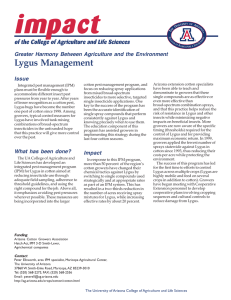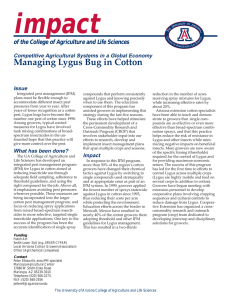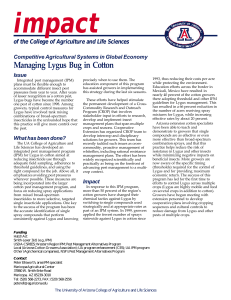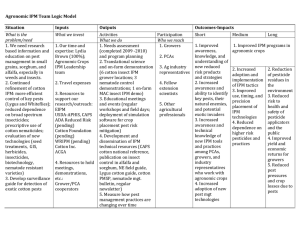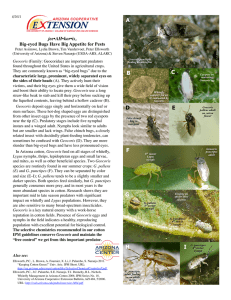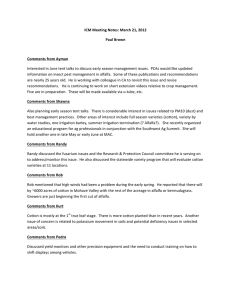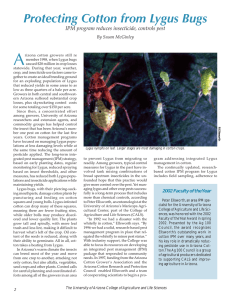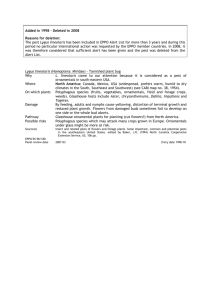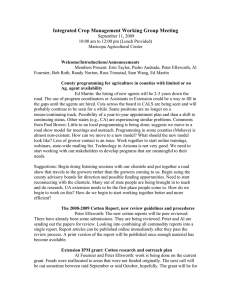impact Lygus Management of the College of Agriculture
advertisement
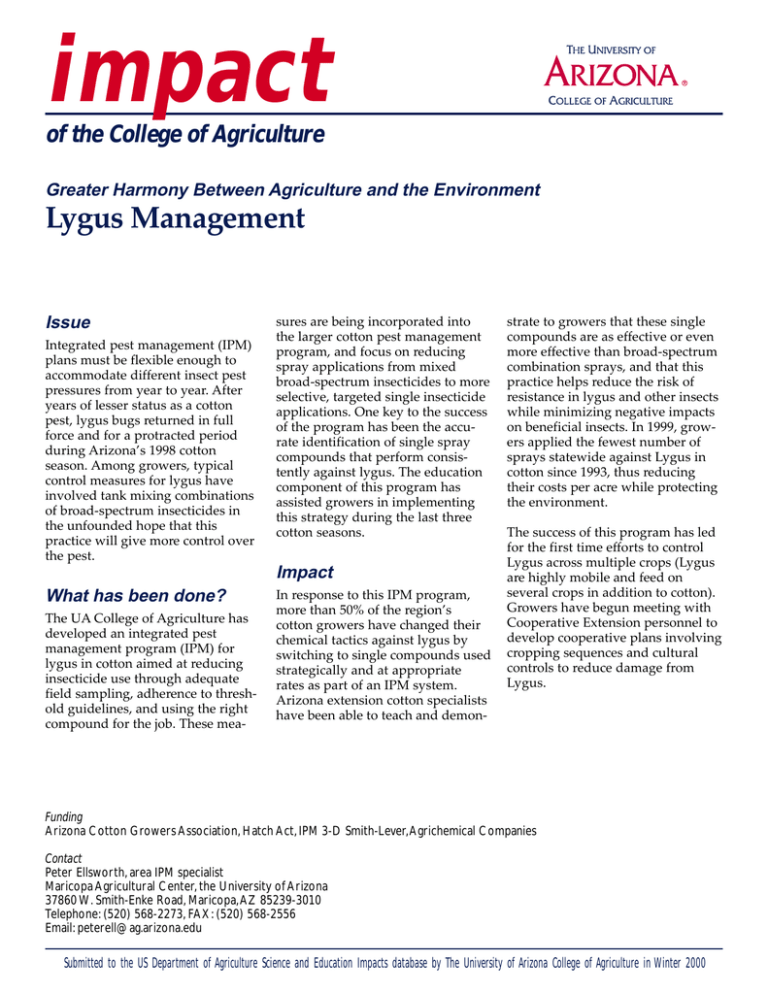
impact of the College of Agriculture Greater Harmony Between Agriculture and the Environment Lygus Management Issue Integrated pest management (IPM) plans must be flexible enough to accommodate different insect pest pressures from year to year. After years of lesser status as a cotton pest, lygus bugs returned in full force and for a protracted period during Arizona’s 1998 cotton season. Among growers, typical control measures for lygus have involved tank mixing combinations of broad-spectrum insecticides in the unfounded hope that this practice will give more control over the pest. sures are being incorporated into the larger cotton pest management program, and focus on reducing spray applications from mixed broad-spectrum insecticides to more selective, targeted single insecticide applications. One key to the success of the program has been the accurate identification of single spray compounds that perform consistently against lygus. The education component of this program has assisted growers in implementing this strategy during the last three cotton seasons. Impact What has been done? The UA College of Agriculture has developed an integrated pest management program (IPM) for lygus in cotton aimed at reducing insecticide use through adequate field sampling, adherence to threshold guidelines, and using the right compound for the job. These mea- In response to this IPM program, more than 50% of the region’s cotton growers have changed their chemical tactics against lygus by switching to single compounds used strategically and at appropriate rates as part of an IPM system. Arizona extension cotton specialists have been able to teach and demon- strate to growers that these single compounds are as effective or even more effective than broad-spectrum combination sprays, and that this practice helps reduce the risk of resistance in lygus and other insects while minimizing negative impacts on beneficial insects. In 1999, growers applied the fewest number of sprays statewide against Lygus in cotton since 1993, thus reducing their costs per acre while protecting the environment. The success of this program has led for the first time efforts to control Lygus across multiple crops (Lygus are highly mobile and feed on several crops in addition to cotton). Growers have begun meeting with Cooperative Extension personnel to develop cooperative plans involving cropping sequences and cultural controls to reduce damage from Lygus. Funding Arizona Cotton Growers Association, Hatch Act, IPM 3-D Smith-Lever, Agrichemical Companies Contact Peter Ellsworth, area IPM specialist Maricopa Agricultural Center, the University of Arizona 37860 W. Smith-Enke Road, Maricopa, AZ 85239-3010 Telephone: (520) 568-2273, FAX: (520) 568-2556 Email: peterell@ag.arizona.edu Submitted to the US Department of Agriculture Science and Education Impacts database by The University of Arizona College of Agriculture in Winter 2000
